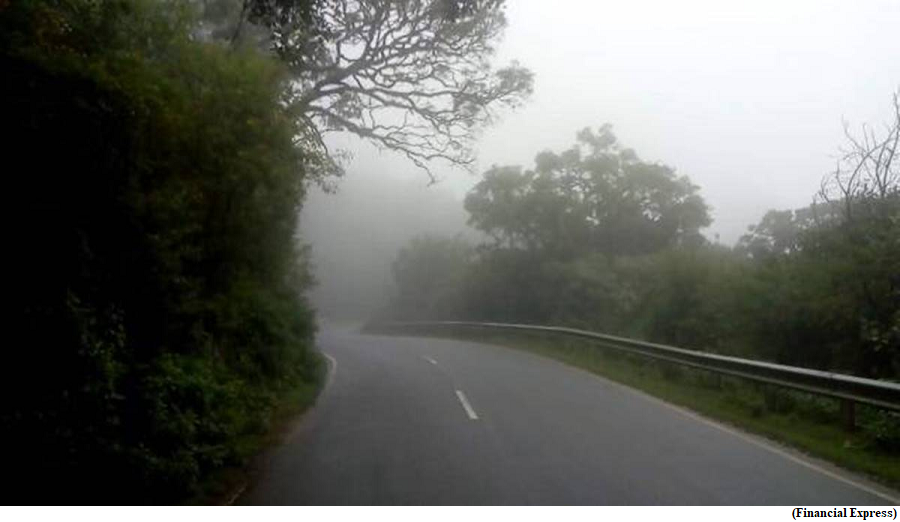The Forest (Conservation) Amendment Bill 2023: A need of the hour (GS Paper 3, Environment)

Context:
- The Forest (Conservation) Amendment Bill 2023, seeking to streamline the provisions of ‘The Forest (Conservation) Act, 1980’ was recently introduced to the Lok Sabha.
Focus:
- This bill is a beautiful symbolization of Trishul (Trident) of Lord Aadi-Shiv (the God of Nature) having emphasis upon the 3 identifications of the Forests, which can be described as the lungs of the mother earth (Delivery of Life), the fuel to the growth engine of a nation (Development & Sustainability) and the natural border guard of the geography of a country (Defence and Security).
Balanced approach:
- Describing more upon the above depiction, it is stated that the bill constitutes an institutionalized mechanism for diversion of reserved forests, use of forest land for non-forest purposes, assigning of forest land by way of lease for non-forest activities, clearing of naturally grown trees for the purpose of regeneration &re-afforestation, etc.
- Therefore this addresses not only the contemporary issues such as climate change, carbon neutrality, more efficient management of our forest resources to increase their productivity and flow of ecosystem goods & services, besides catering to the economic aspirations of the country, but also the security and strategic interests of the nation.
Diversion of the forest land:
- The said amendment bill has been tabled to make the provisions of the Forest (Conservation) Act, 1980 more effective and relevant to the present scenario and this is the need of the hour.
- Since this Act 1980 came into existence, a necessity was felt to simplify the process of diversion of the forest land, which has now become imperative to address the change in the ecological, social and environmental regimes and policies relating to conservation and development of forests.
- Achieving the national targets of Net Zero Emission by 2070 and maintaining or enhancing the forest carbon stock is a top priority.
- A declining tendency of undertaking plantations in non-forest lands has been observed owing to the apprehension among individuals, organisations and authorities regarding such plantations being considered forests due to the various interpretations regarding applicability of the old Act.
- Such misapprehensions are becoming a hindrance in enhancing green cover to fulfil the Nationally Determined Contribution targets of creating additional carbon sink of 2.5 to 3.0 billion tons of CO2 equivalent.
Economic aspect:
- Further, to carry forward the country’s rich tradition of preserving forests and their bio-diversity, it is necessary to enhance forest based benefits, including improvement of livelihoods for forest dependent communities.
- Small establishments, habitations on the side of roads and railways also need to be facilitated to ensure safe access to roads, as well as public utilities.
- Moreover, strategic and security related projects of national importance need to be fast-tracked to ensure development of vital security infrastructure, especially along the International Border (IB), Line of Actual Control (LAC) and Line of Control (LoC), as also in the notified Left Wing Extremism (LWE) affected areas.
Key provisions:
- With this backdrop, certain provisions have been proposed in the Bill to achieve the desired objectives of diversion of forest of land, which are primarily to allow
- proper maintenance of forest operations requiring regeneration activities, establishment of check posts, maintenance activities for prevention of fire and provision of water infrastructure, etc.;
- proper protection and conservation of forests by local communities requiring availability of livelihood opportunities, which can be effectively enabled through promotion of eco-tourism; and
- not treating Survey activities as non-forest activities, such as investigation, reconnaissance, etc., in forest area (temporary in nature and result in no perceptible change in the forest vegetation or in breaking of land), which are also an effective tool to determine the availability of minerals without impacting the forest land.
Strategic & security aspects:
- Moreover, focusing on development and strategic & security aspects, suitable amendments have also been proposed in the Act by the way of this Bill, mainly to keep the following categories of land directly out of the provisions of this Act:
- such forest land situated alongside a rail line or a public road maintained by government, which provides access to a habitation, or to such rail, and roadside amenity up to a maximum size of 0.10 hectare in each case, so as to facilitate small establishments, habitations on the side of roads/railways by providing them access and connectivity to main arterial roads and other public utilities.
- such forest land situated within a distance of hundred kilometres along IB or LOC or LAC, proposed to be used for construction of strategic linear project of national importance and concerning national security on fast-track basis; or
- up to ten hectares, proposed to be used for construction of security related infrastructure; or
- up to five hectares in a LWE affected areas, proposed to be used for construction of defence related project or a camp for paramilitary forces or public utility projects.
Way Forward:
- In a nutshell, it can be stated that the said Amendment Bill is a long awaited and welcome step to suitably amend the old Act, so that the new challenges can be effectively met, relating to ecological, social and environmental developments.


